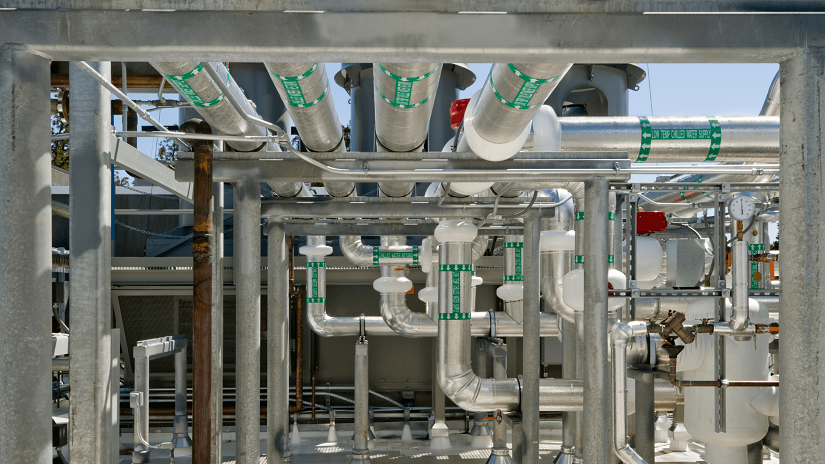Corrosion Under Insulation – A Significant Threat To Process Industries Worldwide

The ever-present threat of Corrosion Under Insulation (CUI) is widely accepted as being one of the most significant and extensive problems facing process industries all around the world.
CUI is essentially a severe form of general and localised corrosion caused by moisture on the external surface of insulated equipment or moisture in the insulation material itself and it costs companies millions of dollars each year to inspect pipelines and vessels and repair or replace compromised equipment.
Companies simply can’t afford to ignore the possibility of the problem because they face the very real risk of a catastrophic outcome resulting from leaks or failure of a pipeline or vessel which has been damaged by this type of corrosion.
Coverings are an essential reality in process facilities such as oil & gas plants and refineries for a number of reasons, including protecting the pipe systems, increasing energy efficiencies, reducing heat loss and providing a safety barrier to protect personnel from being burnt by the hot pipes. However, all the benefits of insulating piping systems come with the ever-present threat of corrosion under the layers of cladding.
Despite the fact that technicians apply insulation material thoroughly and carefully and make sure that all joints, terminations and other irregularities are meticulously sealed, the reality is that moisture does sometimes penetrate into the layers.
There’s simply no way of preventing CUI and nor is there any quick fix. However, the most difficult aspect is actually detecting the problem.
In most instances, the damage is already done, or is fairly well advanced by the time the covering is actually removed and the surface exposed.
So how does the process industry inspect for CUI?
Visual inspection is the most common technique but because the pipe surface isn’t accessible, it generally requires the removal of the insulation or cladding. But this is a significant logistical exercise and is time-consuming and labour intensive. The inspection process is further complicated because many of the areas of concern are hard to access.
Inspecting for CUI generally involves a combination of non destructive testing tools and techniques including visual inspection, digital radiography, pulsed eddy current (PEC) and thermal imaging. Each of these methods has particular strengths and applications and facility managers have to apply an integrated maintenance and inspection solution to achieve the best possible outcome.
Fortunately, technology has advanced significantly in recent years and a lot more can be done to detect CUI than before. Using advanced equipment, operators are now able to get highly accurate results in real-time and inspect much greater areas far more quickly and with greater certainty of results. For example, unlike previous time-consuming PEC technology which involved capturing individual readings of wall thickness and then processing each exposure using lab equipment, innovations like the LYFT system by Eddyfi obtains results in seconds, with full traceability.
Tackling the problem of CUI in process industries requires a multi-disciplinary approach, which includes making the right choices of high quality coatings in the first instance, sealing the insulation carefully, implementing a comprehensive coatings maintenance plan and making the right choices of inspection technologies.
Partnering with an experienced technical equipment supplier like Nexxis make a crucial difference in what can be a costly and time-consuming battle against CUI. We offer a unique combination of industry experience, technical know-how and the world’s leading inspection tools and technologies – and are therefore in a strong position to help facility operators achieve optimum results from their assets.
For more information about inspecting for CUI or to find out more about Nexxis’ flexible solutions for non destructive testing equipment, please contact us.
